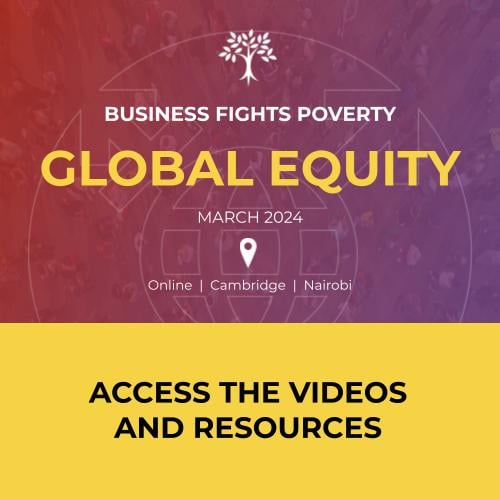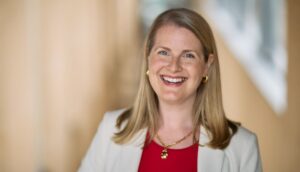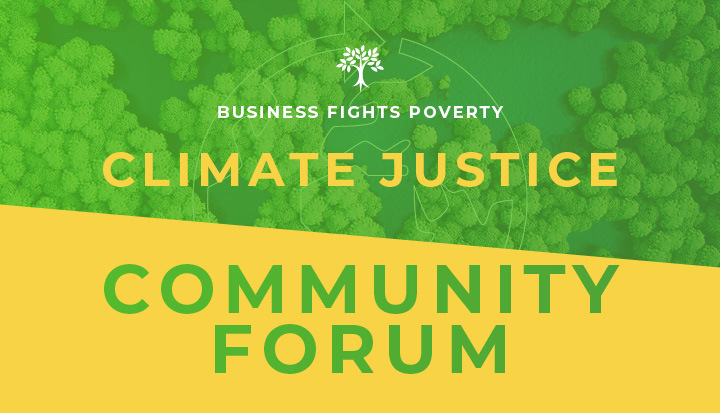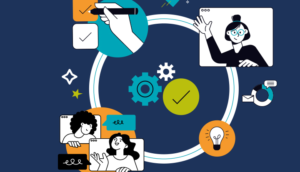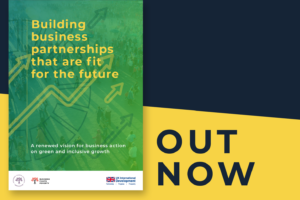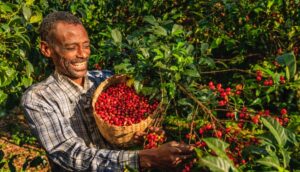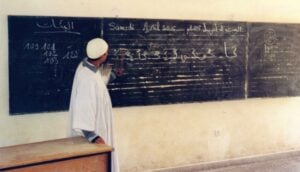The business challenges involved in preparing for the future are becoming more difficult. From the “push” side, a more complex and more entangled world means that disruption comes more often, and from more unexpected places. From the “pull” side, employees, customers, and sometimes investors increasingly expect businesses to worry about more than the bottom line. But businesses often lack the tools to move beyond conventional planning models.
California 100 is an ambitious approach to this problem. The project is a statewide initiative which is designed to build “a vision and strategy for California’s next century.” Working with the British-based futures practice SOIF, it has also produced a toolkit to help decision-makers to improve their use of strategic foresight.
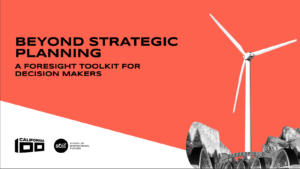
The toolkit includes a mix of evidence about the successful application of futures tools in other contexts, and examples of tools that decision-makers can pick up and use in their own context. When CA100’s Executive Director Karthick Ramakrishnan introduced the toolkit at an event in Sacramento earlier this year, he suggested that strategic foresight was needed because we are in a time of flux:
“The old assumptions are not working out so well, because we’re moving in between what seemed like a fairly stable order to, hopefully, some other stable order, but we’re in a period of transition, so all of the assumptions that got built into that earlier system won’t necessarily serve as well in terms of what’s to come.”
‘Challenge your assumptions’ is one of the five practices that Ramakrishnan sees as being essential for good strategic foresight work. The others are: “Take time seriously”; “Become more skilled in sensing patterns”; “Be comfortable with complexity”; and “Get creative”. He distinguishes this from conventional forecasting work. The skill is about living with complex patterns of change until you are able to make sense of them:
“It is using judgement from all of the work that you’ve done to start sensing signals of what’s coming, to be able to differentiate something that’s a one-off from something with a pattern that you need to get prepared for.”
The goal in developing the toolkit with SOIF was to make strategic foresight approaches more accessible, to help them into the mainstream and to make them more democratic. (This last has been a goal of some parts of the futures community since Johann Galtung and Robert Jungk organised the Mankind 2000 conference in Oslo in 1967.)
Mainstreaming also means ensuring that strategic foresight has a hinge from insight to action. Ramakrishnan jokes that he likes his acronyms, and his three-letter acronym for this is ‘DNA’: Data, Narrative, Action:
“When you go to a decision-maker, they say, I need to see the data before I can do anything about it… Data’s important for credibility. But if you want that to be meaningful and memorable you need to have community narratives woven through, and all of that has to be in service of some kind of strategic action.”
He stresses the importance of aligning around values before you start this work, because these are often collective action problems which involve multiple actors. Unless there is explicit agreement about values and core principles early on, people are more likely to drop out later:
“The old saying is that ‘if you want to go fast, go alone, if you want to go far, go with others’. Once we get people with us and aligned, we’re able to go pretty fast.”
CA100’s values—another acronym—are summarised as IRISE: innovation, resilience, inclusion, sustainability and equity.
The toolkit itself draws extensively on SOIF’s advisory work with clients in the public, private and non-profit sectors over more than a decade.
It opens with a range of case studies from around the world, from redesigning a New Zealand health system to the application of intergenerational fairness as a lens to assess proposed changes to the pension system in Portugal.
The tools range from the straightforward—futures wheels, for example—to familiar if more complex methods such as scenario building, to methods that help to build alignment around a vision. The need to bring foresight back into strategy—the ‘A’ of the DNA—is represented here by methods such as backcasting and wind-tunnelling.
The final two sections include a guide to constructing an effective foresight journey, and to increasing the prospects of success by building a ‘foresight ecosystem.’ This builds on work that SOIF originally did for the UK’s Government Office for Science, and has now been extended to include assessment of capabilities and development.
There are quotes about futures work scattered through the toolkit, but the guiding spirit here is that of Louis Pasteur’s famous line that “Chance favours only the prepared mind.” Strategic foresight, above all, is a method for seeing change early.
The Decision Makers’ toolkit was developed jointly by California 100 and School of International Futures (SOIF), a global non-profit organisation that empowers people, organisations and businesses to use participatory futures and foresight to drive change. SOIF offers advisory services, bespoke capability building and foresight training. Contact Andrew Curry, our Director of Futures, to learn more or discuss your advisory requirements.

